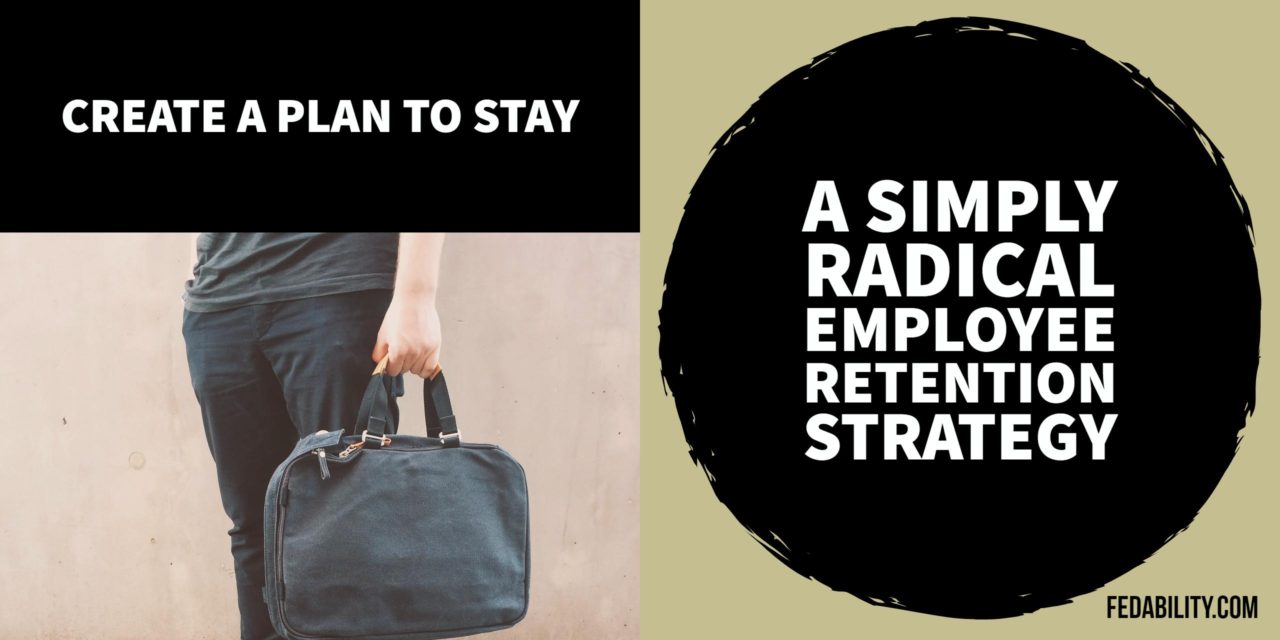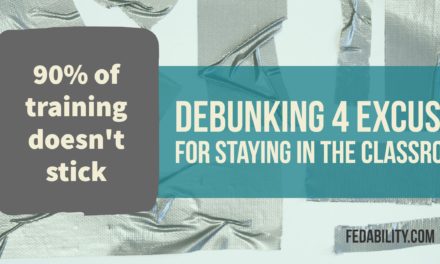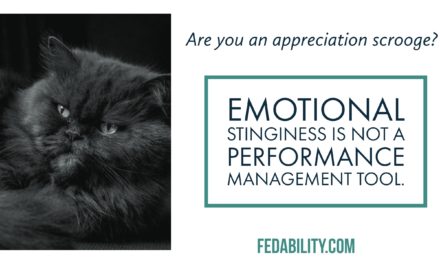For the most part, agencies aren’t actively trying to retain employees. Worse is that there’s no efforts to retain the highest performers. There’s tons of advice and strategies available to retain government employees that I won’t rehash here. But I wanted to offer you a strategy you may not have considered before. One that will work for high performers. And, one that will neither cost you money nor require special approval from your leadership. The employee retention strategy is as simple as this. If you want to retain an employee, you need to create a situation where they plan to stay.
Think about the furthest out goal or activity you have planned for your current job.
Is it that you have a report due in two weeks? Is it that you have a training class you plan to attend in two months? Conversely, do you have a particular end date in mind for your current job? Perhaps you’re waiting for your year-in-grade anniversary.
Whatever that furthest out date is, that’s the longest the agency can hope to keep you. Because that’s how long you plan to stay.
Let me give you some examples from my own work in the past.
- I was developing a leadership program. The program itself was a year long. It would require about 3 months of communication, recruitment, and selection into the program. And, developing the program itself (materials, writing contracts, etc.) would take about 9 months. Taken together, it would be at least 2 years before I’d be considering leaving.
- In one position, they offered a student loan repayment with a 3 year commitment. It would be at least 3 years before I’d consider leaving.
I was offered a position where they expected the project would take a minimum of one year to complete. If I took the job, I knew at minimum I would be committing to a year. - The take away here, is that the agencies I was working for were using the power of planning.
Now you might be thinking, “A year isn’t very long.” And, you’d be right. But what if halfway through that year, you got them committed to another year. You’d now have 1.5 years of their hearts, minds, and productivity.
Now, what if three quarters of the way through the second year, you got them committed to a two year project? In that case, you’ll have gotten them for around 4 years.
The key here is to keep getting them to commit to new plans, goals, or activities, in the future. Instead, you’ll be stringing together these short increments of a couple of years that will ideally stretch out as long as possible.
Your employee retention strategy shouldn’t aim to keep someone for their entire career. Instead, plan to keep your high performer for as long as they plan to stay.
When planning to stay doesn’t work for employee retention
While the strategy should be very effective, there are going to be situations when it won’t work. It won’t work if:
- The goal doesn’t mean anything to them. Or, leaving the goal behind doesn’t matter to them.
- The work environment is so bad, they can’t stay through the goal.
- A more amazing goal/plan comes across their desk that takes them elsewhere.
Of those three, only one is out of your control as a supervisor or as an agency.
So my question to you is how long do your employees plan to stay? How long have you helped them plan?
For more information on employee retention, check out our article with 3 things your agency can be doing to retain employees before they even onboard.





